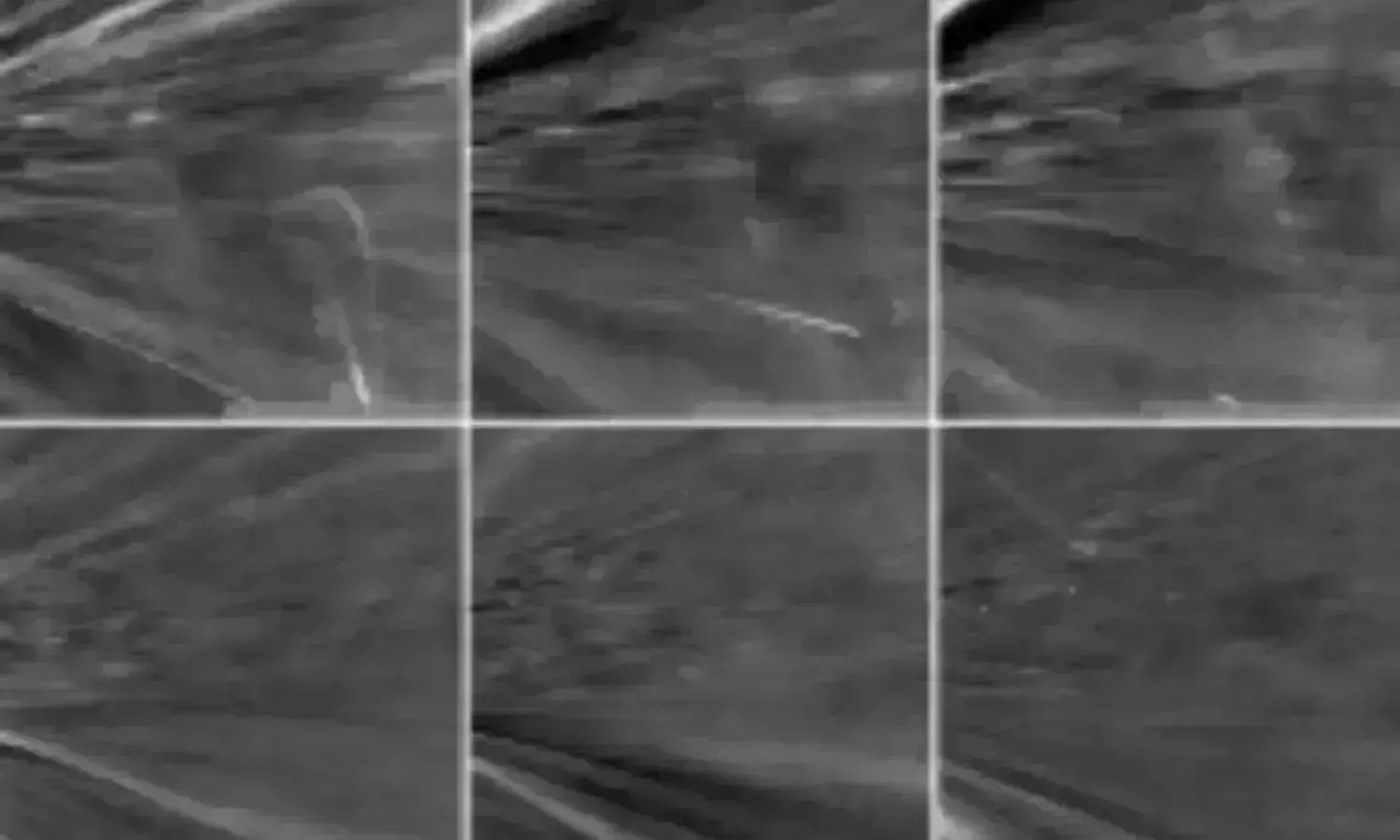- Home
- Medical news & Guidelines
- Anesthesiology
- Cardiology and CTVS
- Critical Care
- Dentistry
- Dermatology
- Diabetes and Endocrinology
- ENT
- Gastroenterology
- Medicine
- Nephrology
- Neurology
- Obstretics-Gynaecology
- Oncology
- Ophthalmology
- Orthopaedics
- Pediatrics-Neonatology
- Psychiatry
- Pulmonology
- Radiology
- Surgery
- Urology
- Laboratory Medicine
- Diet
- Nursing
- Paramedical
- Physiotherapy
- Health news
- Fact Check
- Bone Health Fact Check
- Brain Health Fact Check
- Cancer Related Fact Check
- Child Care Fact Check
- Dental and oral health fact check
- Diabetes and metabolic health fact check
- Diet and Nutrition Fact Check
- Eye and ENT Care Fact Check
- Fitness fact check
- Gut health fact check
- Heart health fact check
- Kidney health fact check
- Medical education fact check
- Men's health fact check
- Respiratory fact check
- Skin and hair care fact check
- Vaccine and Immunization fact check
- Women's health fact check
- AYUSH
- State News
- Andaman and Nicobar Islands
- Andhra Pradesh
- Arunachal Pradesh
- Assam
- Bihar
- Chandigarh
- Chattisgarh
- Dadra and Nagar Haveli
- Daman and Diu
- Delhi
- Goa
- Gujarat
- Haryana
- Himachal Pradesh
- Jammu & Kashmir
- Jharkhand
- Karnataka
- Kerala
- Ladakh
- Lakshadweep
- Madhya Pradesh
- Maharashtra
- Manipur
- Meghalaya
- Mizoram
- Nagaland
- Odisha
- Puducherry
- Punjab
- Rajasthan
- Sikkim
- Tamil Nadu
- Telangana
- Tripura
- Uttar Pradesh
- Uttrakhand
- West Bengal
- Medical Education
- Industry
7T proton MR spectroscopic imaging can identify brain changes in multiple sclerosis: Study

Austria: A recent study in the journal Radiology suggests that MR spectroscopic imaging at 7.0 T can identify changes in the brains of patients with multiple sclerosis (MS) that were not visible at T1- or T2-weighted MRI. Further, metabolic abnormalities in the normal-appearing white matter and cortical gray matter were found to be related to disability.
Previous studies have shown that MR spectroscopic imaging (MRSI) allows in vivo assessment of brain metabolism. Also, it is of special interest in MS, where morphologic MRI cannot depict major parts of disease activity. Wolfgang Bogner, and the team therefore, aimed to evaluate the ability of 7.0-T MRSI to depict and visualize pathologic alterations in the normal-appearing white matter (NAWM) and cortical gray matter (CGM) in patients with MS and to investigate their relation to disability.
For this purpose, the researchers performed free-induction decay MRSI at 7.0 T. Between January 2016 and December 2017, participants with MS and age- and sex-matched healthy controls were recruited prospectively. Metabolic ratios were obtained in NAWM, white matter lesions, and CGM regions.
The researchers also performed subgroup analysis for MS-related disability based on Expanded Disability Status Scale (EDSS) scores. Associations between metabolic ratios and disability were also explored.
Sixty-five participants with MS and 20 age- and sex-matched healthy controls were evaluated.
Key findings include:
- Higher signal intensity of myo-inositol (mI) with and without reduced signal intensity of N-acetylaspartate (NAA) was visible on metabolic images in the NAWM of participants with MS.
- A higher ratio of mI to total creatine (tCr) was observed in the NAWM of the centrum semiovale of all MS subgroups, including participants without disability (marginal mean ± standard error, healthy controls: 0.78 ± 0.04; EDSS 0–1: 0.86 ± 0.03; EDSS 1.5–3: 0.95 ± 0.04; EDSS ≥3.5: 0.94 ± 0.04).
- A lower ratio of NAA to tCr was found in MS subgroups with disabilities, both in their NAWM (marginal mean ± standard error, healthy controls: 1.46 ± 0.04; EDSS 1.5–3: 1.33 ± 0.03; EDSS ≥3.5: 1.30 ± 0.04) and CGM (marginal mean ± standard error, healthy controls: 1.42 ± 0.05; EDSS ≥3.5: 1.23 ± 0.05).
- mI/NAA correlated with EDSS (NAWM of centrum semiovale: r = 0.47; parietal NAWM: r = 0.43; frontal NAWM: r = 0.34; frontal CGM: r = 0.37).
"Our findings demonstrated that multivoxel 7.0-T free-induction decay MR spectroscopic imaging can depict and visualize pathologic manifestations of multiple sclerosis that is beyond demyelinating lesions that are associated with a disability," wrote the authors.
Considering these invisible changes could enhance measures for ongoing disease activity, and would improve the monitoring of disease progression and efficacy of current treatment and supporting decision-making for treatment switching, they explained.
Reference:
The study titled, "Extensive Brain Pathologic Alterations Detected with 7.0-T MR Spectroscopic Imaging Associated with Disability in Multiple Sclerosis," was published in the journal Radiology.
Dr Kamal Kant Kohli-MBBS, DTCD- a chest specialist with more than 30 years of practice and a flair for writing clinical articles, Dr Kamal Kant Kohli joined Medical Dialogues as a Chief Editor of Medical News. Besides writing articles, as an editor, he proofreads and verifies all the medical content published on Medical Dialogues including those coming from journals, studies,medical conferences,guidelines etc. Email: drkohli@medicaldialogues.in. Contact no. 011-43720751


